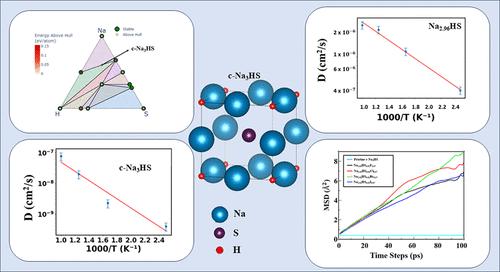Semiconducting Overoxidized Polypyrrole Nano-Particles for Photocatalytic Water Splitting
IF 13
2区 材料科学
Q1 CHEMISTRY, MULTIDISCIPLINARY
引用次数: 0
Abstract
Capturing sunlight to fuel the water splitting reaction (WSR) into O2 and H2 is the leitmotif of the research around artificial photosynthesis. Organic semiconductors have now joined the quorum of materials currently dominated by inorganic oxides, where for both families of compounds the bandgaps and energies can be adjusted synthetically to perform the Water Splitting Reaction. However, elaborated and tedious synthetic pathways are necessary to optimize the photophysical properties of organic semiconductors. This study reports here, that when pyrrole dissolved distilled water is exposed to high energy radiation, this leads to the formation of nanostructured spherical polypyrrole (Nano-PPy) particles that are characterized as overoxidized polypyrrole. Electrochemical studies and Tauc's plot highlight the production of a semiconducting material with a bandgap of ≈1.8 eV with the conduction band at ≈−0.5 V and a valence band at ≈+1.3 V vs NHE. When suspended in water and under irradiation at wavelengths higher than 420 nm, Nano-PPy materials lead to O2 evolution, while electrons and protons can be recovered in the form of reduced quinone. Interestingly, upon intermittent visible irradiation and dark phases, a consumption of the evolved O2 from oxidation of water is observed. This concomitant O2 reduction is found to produce H2O2.

求助全文
约1分钟内获得全文
求助全文
来源期刊

Small
工程技术-材料科学:综合
CiteScore
17.70
自引率
3.80%
发文量
1830
审稿时长
2.1 months
期刊介绍:
Small serves as an exceptional platform for both experimental and theoretical studies in fundamental and applied interdisciplinary research at the nano- and microscale. The journal offers a compelling mix of peer-reviewed Research Articles, Reviews, Perspectives, and Comments.
With a remarkable 2022 Journal Impact Factor of 13.3 (Journal Citation Reports from Clarivate Analytics, 2023), Small remains among the top multidisciplinary journals, covering a wide range of topics at the interface of materials science, chemistry, physics, engineering, medicine, and biology.
Small's readership includes biochemists, biologists, biomedical scientists, chemists, engineers, information technologists, materials scientists, physicists, and theoreticians alike.
 求助内容:
求助内容: 应助结果提醒方式:
应助结果提醒方式:


